-
Posts
549 -
Joined
-
Last visited
Content Type
Profiles
Forums
Gallery
Events
Posts posted by CDR_Ret
-
-
Here is a post I made a while back on getting started in DelfShip Free. These instructions were based on the program several versions ago, so some of them may be out of date.
My biggest complaint to the company was that they don't clearly define the terms they used in their manual.
An abbreviated DelftShip Offset Table glossary:
- X-coordinate—[Edited] distance forward from aft perpendicular. 0.0000 is the AP. Negative values are aft of the AP. [sorry about that. It's been over a year since I used the program. See the image from the DS manual below.]
- Y-coordinate—distance athwartships from the model centerline. 0.0000 is the centerline. Negative values appear on opposite side of the centerline from "face" of the hull.
- Z-coordinate—distance above the model baseline. For practical purposes, this should be at the height of the rabbet line for wooden ships. Making the baseline at the bottom of the keel really gets ugly unless you have a smooth, round-bottomed vessel. The "Draft" value should take this position into account.
- Waterline—self explanatory. Defined by a common Z-coordinate above the baseline at all stations.
- Station—self explanatory. Defined by a common X-coordinate at all waterlines or other longitudinal feature.
- Deck Line—defined by the highest X-coordinate at each station or other longitudinal feature. You can't have the "Deck Line" lower than the tops of the stations for this feature to work. Basically the moulded rail line in conventional drawings.
- Aft contour—the line defined by all the waterline/station points with a Y-coordinate of 0.0000 from the centerline at the aft end of the model. (It may also work for non-zero values if they define the distance of the rabbet line from the centerline. Never tried that.)
- Forward contour—the line defined by all the waterline points with a Y-coordinate of 0.0000 above the baseline at the forward end of the model. (Ditto as for "Aft Contour".)
- Flat of bottom—for flat-bottomed vessels like tankers, I think this tells the program to extend the bottom station Y-coordinate in the offset table to the centerline.
- Length—must agree with the Project Settings length (between perpendiculars) value.
- Beam—must agree with the Project Settings beam value.
- Draft—this is the setting that determines where the waterline is drawn on the hull above the baseline. It must agree with the Project Settings draft value.
These are my best guesses, based on limited experience using the program. I recommend building the entire table in a spreadsheet, then exporting it as a plain ASCII text (.txt) file. Be aware that I had the best results by adding zeros in each column where there was no data. And you can't stick additional data between established waterlines to better define a sharp curve!
Page 35 of the current manual (manual_809_296_mc0.pdf) shows the file architecture. Waterline data are arranged horizontally; station data are arranged vertically.
Cheers!
-
Nuclear warships present a special problem as museums or for disposal. The reactor compartments retain radioactively contaminated systems, even after the nuclear fuel is removed, so containing the residual radioactivity and shielding the visitors from radiation is challenging. Sinking the ships presents the problem of releasing radioactivity to the environment, not to mention granting unrestricted access to classified hull construction technology to divers.
To my knowledge, the only complete nuclear warship accessible by the public is the USS Nautilus (SSN 571) located at its museum in New London, Connecticut, USA. It required special radiation shields to be added outboard of the reactor compartment, and the engineering spaces are not accessible. All other decommissioned US nuclear submarines have been sent through the "ship and submarine recycling program," where the first step after removing usable equipment is to cut out the reactor compartment (and the missile compartment in the case of boomers) and weld the two halves together for towing to the recycling yard if applicable. The reactor compartments are sealed and transported to the storage facility at Hanford, WA.
Fortunately, civic and military organizations have seen fit to preserve the sails of many important subs. Preserving the sails in lieu of the entire ship is a good compromise between economy and memorialization.:
USS Nautilus (SSN 571)—Entire ship, New London, CT
USS Triton (SSRN 586)—Sail, Richland, WA
USS George Washington (SSBN 598)—Sail, New London, CT
USS Woodrow Wilson (SSBN 624)—Bangor, WA
USS Nathanael Greene (SSBN 636)—Sail, Port Canaveral, FL
USS Sturgeon (SSN 637)—Sail, Keyport, WA
USS Tautog (SSN-639)—Sail, Galveston, TX
USS George Bancroft (SSBN-643)—Sail, Kings Bay, GA
USS Lewis and Clark (SSBN 644)—Sail & rudder, Mount Pleasant, SC
USS Grayling (SSN 646)—Sail, Portsmouth Naval Shipyard, Kittery, ME
USS Mariano G. Vallejo (SSBN 658)—Sail, Mare Island, Vallejo, CA
USS Hawkbill (SSN 666)–Sail, Arco, ID
USS Parche (SSN 683)—Sail, Bremerton, WA
USS Boston (SSN-703)—Sail & rudder, Buffalo, NY
(This list may not be up to date)
I am hoping that the last remaining Los Angeles-class boat, USS Bremerton (SSN 698), which I commissioned back in 1981, will be similarly preserved. She is currently homeported in Pearl Harbor, HI.
As a matter of interest, the only US nuclear merchant, the NS Savannah, has been designated a National Historic Landmark, and is currently moored at Baltimore, MD, awaiting funding to permanently provide a memorial park for her.
-
I checked out your site and it has great possibilities.
Make sure you provide links to the ship Historic American Engineering Record (HAER) web pages at the Library of Congress and National Park Service. For example, here is the schooner C.A. Thayer's HAER page.
Terry
- EJ_L, popeye2sea, Canute and 2 others
-
 5
5
-
Hi Wayne.
You are expressing the lament of all who attempt to categorize a diverse area of knowledge into searchable, logical bins.
One approach would be to use a keyword search, but assigning keywords to links can become very time-consuming and laborious.
Another would be to use something akin to the Dewey Decimal Classification system, or for us old navy folks, the SSIC (Standard Subject Identification Code) system.
In the end, no system is perfect.
Best wishes on your project!
Terry
- popeye2sea, Canute, trippwj and 2 others
-
 5
5
-
With respect to my original question, I think I may have found an answer.
I learned today that Matt Turner built a two-masted schooner for the Seventh Day Adventists church missionary work at Pitcairn Island. In fact, the vessel was named the Pitcairn. She was launched in 1890 at Benicia, CA, at the same yard and less than a year before Galilee. Since her service was in the Pacific Tropics, and Pitcairn Island (home of the descendants of the HMS Bounty mutineers) is only 7 degrees south of Tahiti, Galilee's intended area of service as a packet ship, it is very likely that both were equipped with copper bottoms.
Attached is a good photo of the Pitcairn on the construction ways. Need I say more?
Terry
P.S.: Considering the timing of Pitcairn's launch, the vessel in the background could be Galilee herself under construction. The rocker bow is distinctive. Wouldn't that be something?!
-
I apologize for not responding sooner. For some reason, I'm not receiving notifications of comments on this topic.
Pat, in reference to your 26 May comment, you made several interesting observations. I hadn't noticed the angled upper edge of the door before. However, taking all the perspective cues into account, like the door panels, it seems that the upper edge is simply not quite parallel to the track or framing above it. If the door were hinged adjacent to the opening, then the near side of the door would have to be higher than the hinge side because everything is made to conform to the deck sheer in this area. Nothing is square. When closed, the edge of the door toward the bow would be higher than the aft edge.
In the image you enlarged, there does seem to be some kind of plate where a door handle/latch might be located.
Last night I was reading in my copy of The American-Built Clipper Ship in a section that dealt with doors and cabin joinery. The book mentioned that on clipper ships, weather-deck doors on the outboard bulkheads of deck houses invariably were hinged on the forward edge. Then when exposed to boarding seas, normally flowing forward to aft, the water would tend to close the doors minimizing the amount of water shipped in the cabin. If Galilee's side door were hinged, it wouldn't be following this very logical consideration. Of course, clippers were built around 40 years before Galilee, and mainly on the opposite coast.
Steamschooner, thanks for that photo of a sliding door. It's framing is far heavier than shown in Galilee, but it doesn't negate the idea.I have been thinking that, with the significant modifications to the forecastle required for the second cruise, the regular deck house door may have been removed. There is a photo of the ship before that modification, shown below. These doors might have been the main access to the forecastle, and the port-side door was added after this section was removed. I hadn't noticed something else before tonight--both of the doors in this photo were sliding! The starboard door is slightly open.So, for this ship at least, sliding doors seem to be part of Turner's design. I wonder if this was typical of the U.S. West Coast vessels in the 1890s, or if this was his particular inclination?Anyway, I will continue to tease details out of the photos and other records available to make a decision.Have a blessed Memorial Day, for those of you in the U.S. Let's remember all of our fallen dead who served our respective countries to preserve our freedoms.Terry -
Re: mothballing--naval technology is advancing so fast that some warships are becoming obsolete before their planned service lives. The 1st flight 688 subs are a good example. They were the quietest things in the ocean when they were built, but long before their 30-year service life, their base sound levels were already well above that necessary to remain tactically viable. So for ships that depend on advanced technology, mothballing isn't really an option, especially if they're nuclear powered.
Carriers are so big that they can be upgraded repeatedly almost indefinitely until it becomes too expensive to replace legacy parts.
Then there are the Ticos, that Congress wanted to scrap as a sequestration cost-cutting measure. Fortunately the Navy brass want to keep them and upgrade this very capable and good-looking class of ships. Nothing like the Zumwalt abomination or the LCS jokes for warships.
IMHO.
Terry
-
Thanks for the responses.
I'll take a look at the possibility that the door is actually hinged, but there just seems to be too much external hardware for a standard door. Besides, there isn't a door knob or handle evident at the aft edge, which is reasonably clear.
W. H. Curtis's diagram of a conventional door frame, which I have attached, is much simpler and looks very much like a conventional door, even with the high deck coaming.
My reconstruction of the forecastle can be seen at my build log.
The earlier photo is taken on the ship's weather deck looking forward at the aft port corner of the forecastle deckhouse of the brigantine Galilee, built by Matthew Turner in Benicia CA in 1891. She was hired for Pacific Ocean magnetic survey work in 1906 by the Carnegie Institute's Department of Terrestrial Magnetism (DTM/CIW) and served in that capacity until 1909. My grandfather was one of the survey physicists on board for the second and part of the third chartered cruise. Check out Galilee's Wikpedia page and the Ocean Magnetic Surveys pages at the Department of Terrestrial Magnetism website.
Attached here is another photo, very grainy, of the Galilee's port side, showing the relation of the forecastle to the ship. A small galley structure was added for Cruise II forward of the foremast. You can see that there is no exterior door evident, which means it must have opened into the galley. The galley is structurally similar to the forecastle in all respects except for size.
The forward end of the magnetic observation bridge is above the forecastle.
Terry
-
Need some help interpreting what I am seeing here. In the attached photo of Galilee's middle deckhouse port side, there is evidently a sliding door mounted on wheel tracks top and bottom.
Here are some questions:
- How was such a door made reasonably weatherproof?
- Would there be water stops built into the frame to prevent major water intrusions during boarding seas?
- Would the door handle/latch be a lever or just a hand grab like a staple?
As you can see, the photo is pretty muddy where a handle would be. There is a suggestion of a vertical metal rib along the forward edge of the doorway, which might be a water stop.
Like all sliding doors on ships in my experience, there was probably a standing latch when the door was fully open and a latch when it was shut. I have no idea if technology of the late 1800s would have produced a mechanism that would operate both latches.
If anyone has reference photos or other images of such an installation, I'd appreciate seeing them.
Thanks.
Terry
-
-
I, too, read Nordhoff/Hall's trilogy in high school some 50 years ago. Bligh came across as a villain, though one had to acknowledge he was a consummate navigator. Christian was the beleaguered-but-competent first officer who finally had had enough.
But then I recently read Bligh's journals that covered the Tahiti voyage, the mutiny, and the return to safety, which are available from various sources on the web as well as distilled versions in paperback. I came away with a totally different opinion of the man. According to these sources, he detested corporal punishment, and if anything was too lenient with his crew. The narrative pertaining to Christian in Bligh's words paints a disturbed, insolent, and insubordinate individual who chafed under any kind of discipline. Yet Bligh repeatedly gave him the benefit of the doubt and overlooked punishable offenses (and this may have given Christian the courage to go through with the mutiny).
One could suggest that Bligh wrote his journals to favor his viewpoint and prejudice the crew's, but that hypothesis doesn't really ring true. Bligh is detailed in all of his entries, and at the time he made the earlier ones, he had no clue a mutiny would occur later. His attempts to maintain discipline and his concern for the welfare of the crew are remarkable. Ventilating the 'tweendecks, collecting rainwater as often as possible so the crew can wash their clothes, and having the cook provide a variety of prepared meals to keep the crew's spirits up. The journals were hand-written in ink and could hardly be edited later on. Some reviewers believe we have only heavily revised and rewritten versions that tell the narrative Bligh wanted, but if that were the case, he must have had an extraordinary memory, because the details of his narrative fit seamlessly together.
So, as is always the case, it's best to acquire your information on historical figures from a variety of sources in order to arrive at a balanced opinion.
Terry
- st george, dvm27, Ulises Victoria and 1 other
-
 4
4
-
Alan,
As I wrote in July, I spoke directly with the CSR at Dassault in MA on the phone. She confirmed the Vets deal, that no sensitive identifying information needed to show on the scan of the DD214 (e.g. SSN), and that the program was renewable annually at the same price. Unless she was talking through her hat, I think it's legit. Haven't tried to obtain it myself because my main bathroom is torn down to the framing right now, but I plan to someday.
Terry
-
I spoke with a Solidworks CSR on the phone a few days ago. She said that the $20 student version for Vets is renewable annually for the same $20 price. Also, Canadian vets get the same deal by providing a copy of their NDI 75 or CAF 75 cards. I expressed my concern about supplying my Social Security number on the DD214. She said that you can redact any sensitive PID (e.g., SSN) on the DD214 or other ID cards. All they need is confirmation that you served, were discharged, and that you are who you say you are.
Terry
- captainbob, mtaylor, Canute and 1 other
-
 4
4
-
Not sure that, in the absence of evidence to the contrary, we can assume that backfitting geometric rules to extant plans will automatically yield what the original designers had in mind. We know from historical writings that the Greek architects used the Golden Mean for designing their temples. But I suspect that in the early days of designing ocean-going ships, the forms developed based on regional perceptions of what worked and what didn't. And a lot of the designing was done on the building ways by eye and experience, not by compass and straight edge in the loft. Later on, when marine underwriters and governments began establishing rules for insuring and taxing ships and their cargoes, the designs shifted to maximize real cargo capacity while minimizing the tonnage under the rules. This approach resulted in designs that no geometer would have been proud of!
Terry
- Canute, Jhenrique, justsayrow and 1 other
-
 4
4
-
Very nice work, Gerald. Metal can be even more unforgiving than wood at times.
If you would like to read an entertaining contemporary rant against this kind of vessel, take a look at the book "The Progressive Ship Builder, Vol. 1" by John W. Griffiths (1875). The book is available from Google books in various eBook formats for free.
He was all about staying with wooden vessels or, if we have to go to iron, then making them double-hulled. He also rails against the Lloyds vessel classification scheme at the time.
Terry
-
Jhenrique,
With reference to modeling in 3D software, DELFTShip is a free naval architectural 3D drafting program. You can import a table of offsets provided from good references or you can construct a 3D model from scratch referring to three standard plan views. Search this forum for references to "DELFTShip" for discussions on how to do that.
Terry
-
This is in the FWIW category...
The Curator of Navy Ship Models at Carderock provides the following guidelines for details to be included in their museum-quality models. Under Durability of Materials|Range they make the following statement:
Generally, all items on the prototype twelve inches or larger for 1:96 scale (six inches or larger for 1:48 scale) will be reproduced.
I suppose you can continuously scale the detail sizes in relation to these two standards. In the end, we have to decide what we are making the model for and with what we will be satisfied.
Terry
-
Just ran across this thread. It got me to thinking about whether the remains of my grandfather's brigantine Galilee were still visible in the mud in Sausalito, California. As it turned out, they are in Google Earth. I verified this with the Galilee Harbor Community Association management today. Load the KML file in the zip file attached. You will need to have the free Google Earth program installed to view the timbers.
Enjoy.
Terry
- mtaylor, thibaultron and robin b
-
 3
3
-
Thanks for the input, but I serendipitously obtained my answer from a completely unexpected source yesterday.
Last week, I began a series of inquiries with the San Francisco Maritime National Historic Park (one of the parks under the auspices of the National Park System, or NPS) which houses the stern of the Galilee as an outside exhibit at Fort Mason. In the process of asking about the feasibility of having someone from the local modeler's group do some direct measurements on the stern (there wasn't), NPS informed me that they were finalizing the production of a file of Galilee for entry into the Historic American Engineering Record (HAER) maintained by NPS. The engineer involved sent me draft copies of all the plans he is developing of the stern as well as a full history of the vessel from construction to present. This was truly a windfall of information. One key drawing is an elevation cross-section of the stern, which clearly shows the main deck extending to the transom, as well as the poop deck above it. The narrow space between the decks was used as a lazarette. The main deck also had a hatch to the lower afterpeak area above the keel.
So this is another piece of data to aid in reconstructing the vessel. Even though the main cabin no longer exists, it's pretty clear it rested on the main deck as with the C.A. Thayer. The poop deck was provided only to elevate the steering station so the helmsman could see over the cabin and to make main spar sheet tackle more accessible.
Terry
P.S. Since the NPS drawings are only drafts, I felt it would be inappropriate to post them here until they are publicly released.
-
As I am moving into the details of deck furniture, deck houses, and the poop and forecastle decks in Galilee, it occurred to me that I had no idea whether the main deck in a basic sailing merchant ship extends the full length of the hull, including under the poop and forecastle decks. The remains of Galilee's bow at Benicia Historical Museum suggest that the main deck was planked all the way to the stem. But what about at the stern? Galilee had a low poop deck about 4 feet above the main deck surrounding the aft end of the main cabin (see photo below). The helm and main boom traveler were located right aft and the companionway to the captain's cabin was via a short stairway from the poop deck to the cabin deck, which appears to be at the main deck level. So, did the main deck planking continue aft to the fantail under the poop deck?
I found a photo of the lumber schooner C. A. Thayer in San Francisco during her recent renovation showing what appears to be workers standing on the main deck while reinstalling the aft cabin and constructing the poop deck framing (see bottom photo). Would this be typical of merchant vessels c. 1900? If so, what was the dead space under the poop deck used for? Was this part of the lazarette space?
Terry
-
Good stuff, John. That information was the gist of what I was able to glean from several sources. I found the attached document especially helpful. Combined with the film characteristics mentioned earlier, I'm going with the red bottom (when the time comes). At this point, it looks like I need to go back to do some more work on the ship's main rail run and transom moulded outline—a never ending story.
Terry
-
New info provided by a photographer friend might be of technical and historical interest.
The best black and white film used around 1900 was called orthochromatic film. It was sensitive to blue and green/yellow light but was blind to red light. So red would show up in images as nearly black. Green would be a shade of gray. Based on this information, I suspect the hull in the dry dock photo probably has red paint.
Earlier film before 1884 was sensitive to mainly blue and UV light. Panchromatic films sensitive to red light were available in the 1890s, but only on glass plates manufactured in Germany. Based on my grandfather's diaries, and the arduous nature of the geomagnetic field work, I suspect DTM/CIW required the use of emulsion film, which was available only in ortho- or isochromatic form.
Attached is another Vickery painting showing Galilee in a red hull.
Terry -
Also, I have in my files this painting by Charles Vickery, who was well known for his accurate rendering of marine subjects. It shows Galilee in the foreground with green bottom paint. The model of the Galilee that was offered by his gallery also shows a green bottom. So I'm inclined to go with a dark green. (The model was more of an approximation than true to scale. There are many discrepancies in the details compared to the actual vessel.)
To be completely objective, he also painted Galilee with a red bottom, so perhaps the color doesn't really matter.
-
John,
I suspect you are correct, but I wanted to get a second opinion on the bottom covering. The only two U.S. West coast ships I know of that are contemporaries of Galilee are the Balclutha and the C. A. Thayer, both located at SFMHP. Photos of their restorations show them with the dull red bottom paint. My concern is that in the 1907 photo, the paint looks darker than might be the case with the red lead.
Attached are images of NRG sample paint chips for vessels of this era; one is colored and the other in grayscale. Not sure of the color response of the original film, but the grayscale chips suggest a darker color. This is why I could use some Pacific West Coast expertise before making any decisions, granted that this step is pretty far down the pike at this point.
Terry


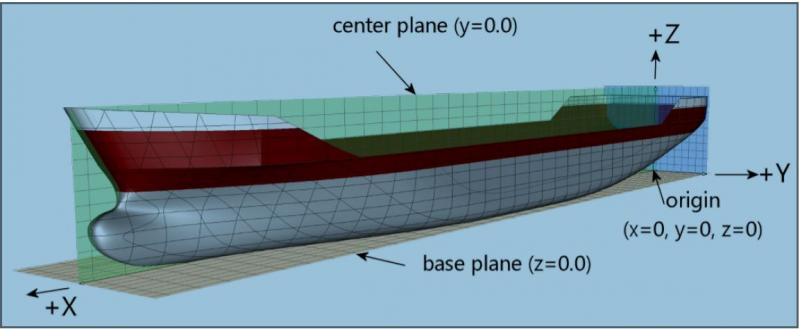
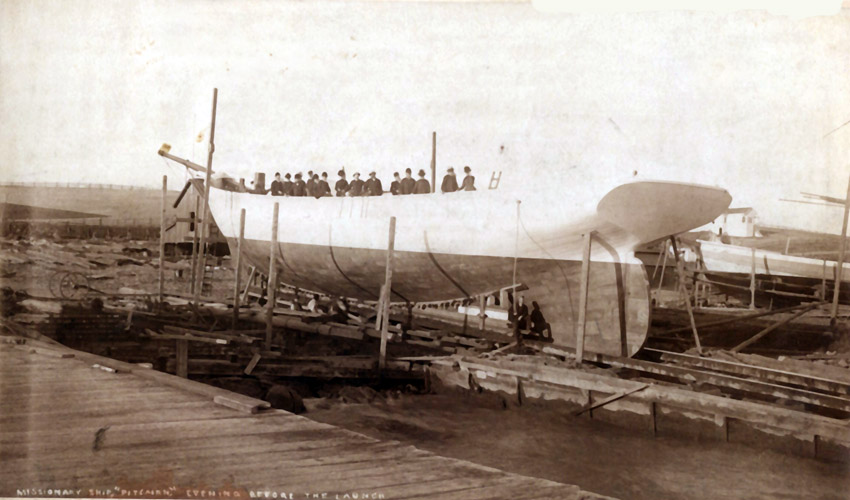
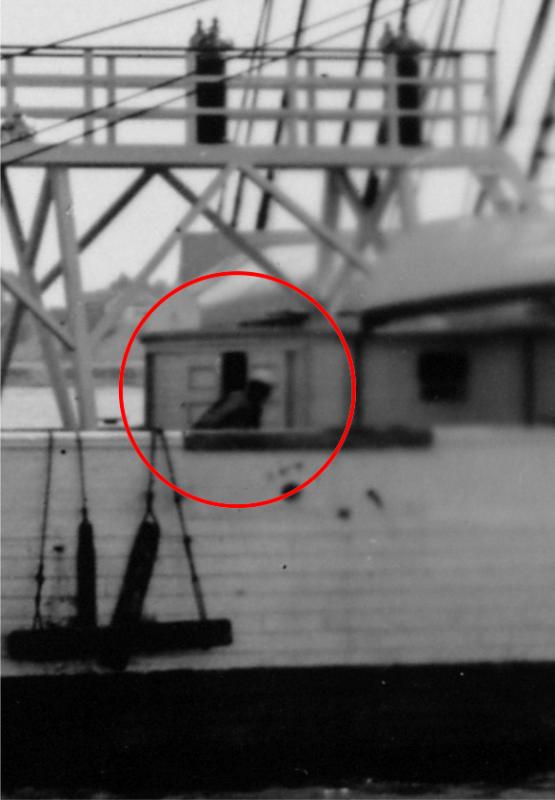
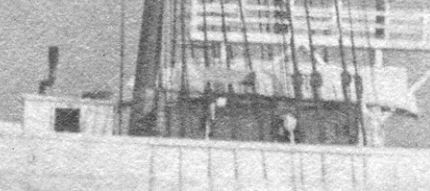
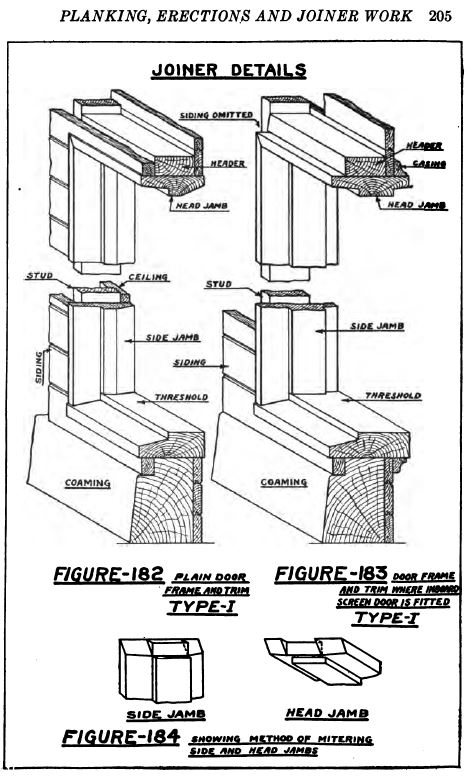
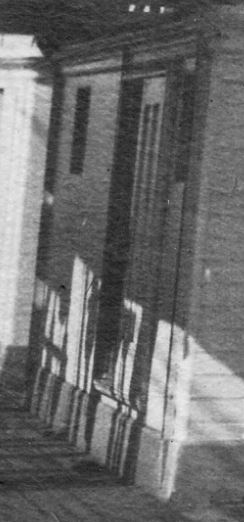
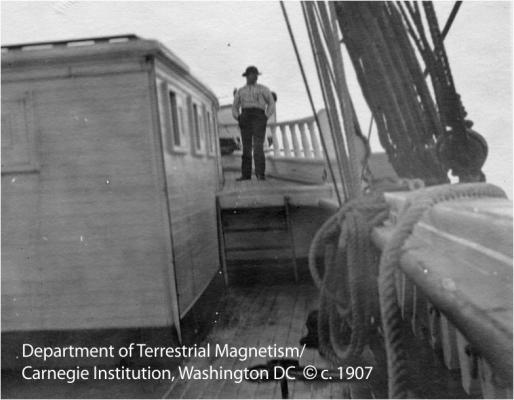
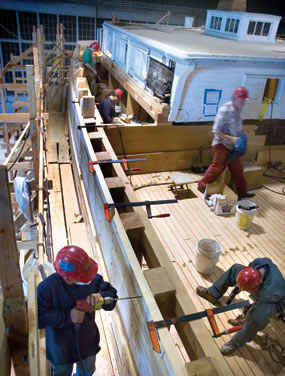
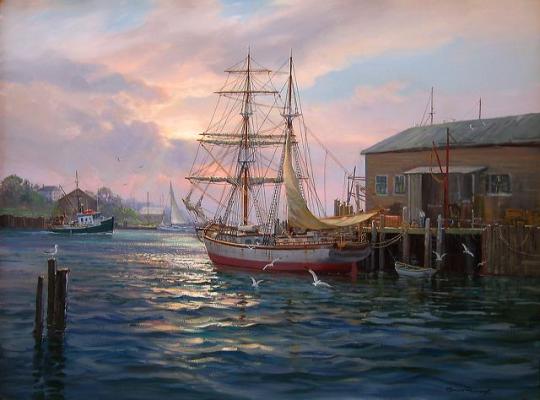
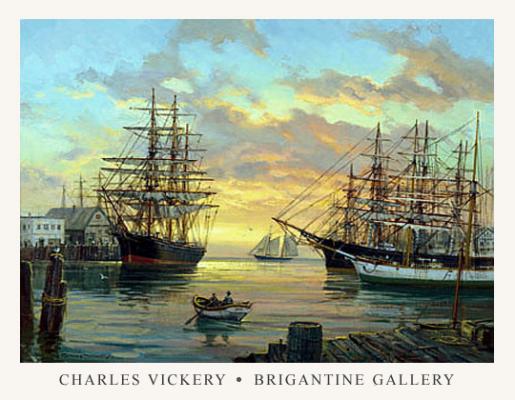
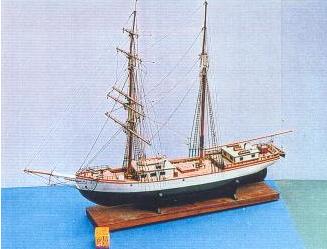
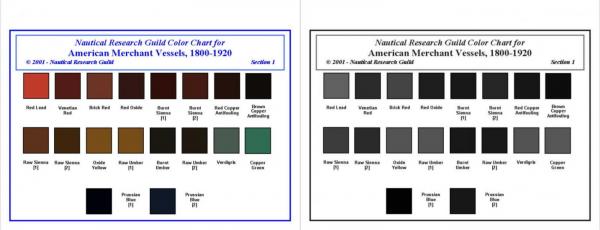
DELFT SHIP
in CAD and 3D Modelling/Drafting Plans with Software
Posted
Jud,
Setting your vessel's length to the overall dimensions is a good way to avoid negative axial coordinates. My drawings of Galilee were all dimensioned starting with the aft perpendicular, so, to avoid remeasuring all the stations, I just went with negative X values at the transom. The program can handle them. It's a computer after all.
Terry.